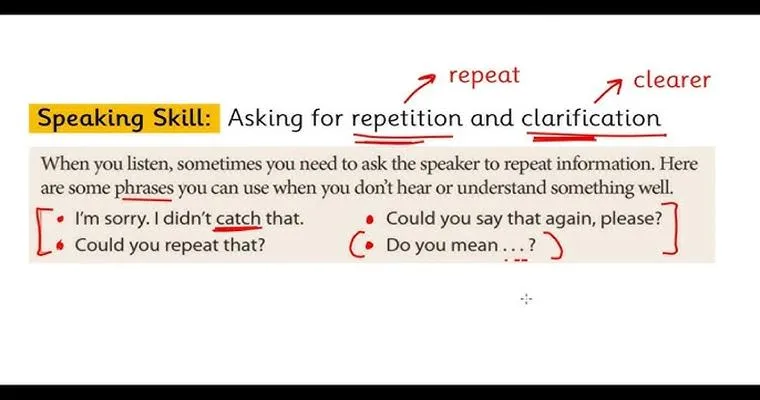In our fast-paced world, the phrase "I need some clarification here" often emerges in conversations, meetings, and written communications. It serves as a polite request for further explanation or detail, enabling individuals to grasp essential points more effectively. Whether in professional settings, educational environments, or casual discussions, seeking clarification is not only helpful but crucial for effective communication.
When someone says, "I need some clarification here", it typically indicates a lack of understanding or uncertainty about a specific topic. This could arise from complex information, ambiguous statements, or simply the need for additional context. By asking for clarification, individuals can ensure they are on the same page, which ultimately leads to better decision-making and collaboration.
Importance of Seeking Clarification
Understanding why it is important to ask for clarification can greatly enhance communication skills. First and foremost, asking for clarification demonstrates "active listening". It shows that you are engaged and interested in understanding the topic at hand. This is particularly important in professional settings where miscommunication can lead to costly mistakes.
Additionally, seeking clarification can prevent misunderstandings. Misinterpretations can snowball into larger issues, affecting teamwork and project outcomes. By addressing any confusion early on, individuals can ensure that everyone involved has a clear understanding of expectations and objectives.
How to Ask for Clarification
When you find yourself thinking, "I need some clarification here", it's essential to approach the situation thoughtfully. Here are some effective strategies:
1. "Be Direct but Polite": Use clear language to express your need for more information. For example, you might say, "Could you elaborate on that point?" This approach is straightforward and respectful.
2. "Specify What You Don’t Understand": Rather than making a broad statement, pinpoint the specific area where you need clarification. This will help the other person focus their response and provide the information you need.
3. "Use Open-Ended Questions": Encouraging a more in-depth explanation can be beneficial. Questions like "Can you explain how that works?" invite a more comprehensive response.
4. "Rephrase for Confirmation": Sometimes, rephrasing what you think you understood can help clarify. For example, "So, what you're saying is… is that correct?" This allows the speaker to correct any misconceptions.
The Role of Clarification in Different Contexts
In various contexts, the need for clarification takes on specific nuances. In educational settings, students may ask for clarification on assignments or concepts to enhance their understanding and performance. In business, team members may seek clarification on project goals or feedback to ensure alignment and effectiveness.
Moreover, effective communication in customer service relies heavily on clarification. Representatives frequently need to clarify customer concerns to provide appropriate solutions and improve satisfaction.
Conclusion
In conclusion, the phrase "I need some clarification here" is a powerful tool that fosters understanding and effective communication. By actively seeking clarification, individuals can enhance their interactions, prevent misunderstandings, and ultimately achieve better outcomes in both personal and professional realms. Remember, asking for clarification is not a sign of weakness but rather a commitment to clear and effective communication.



